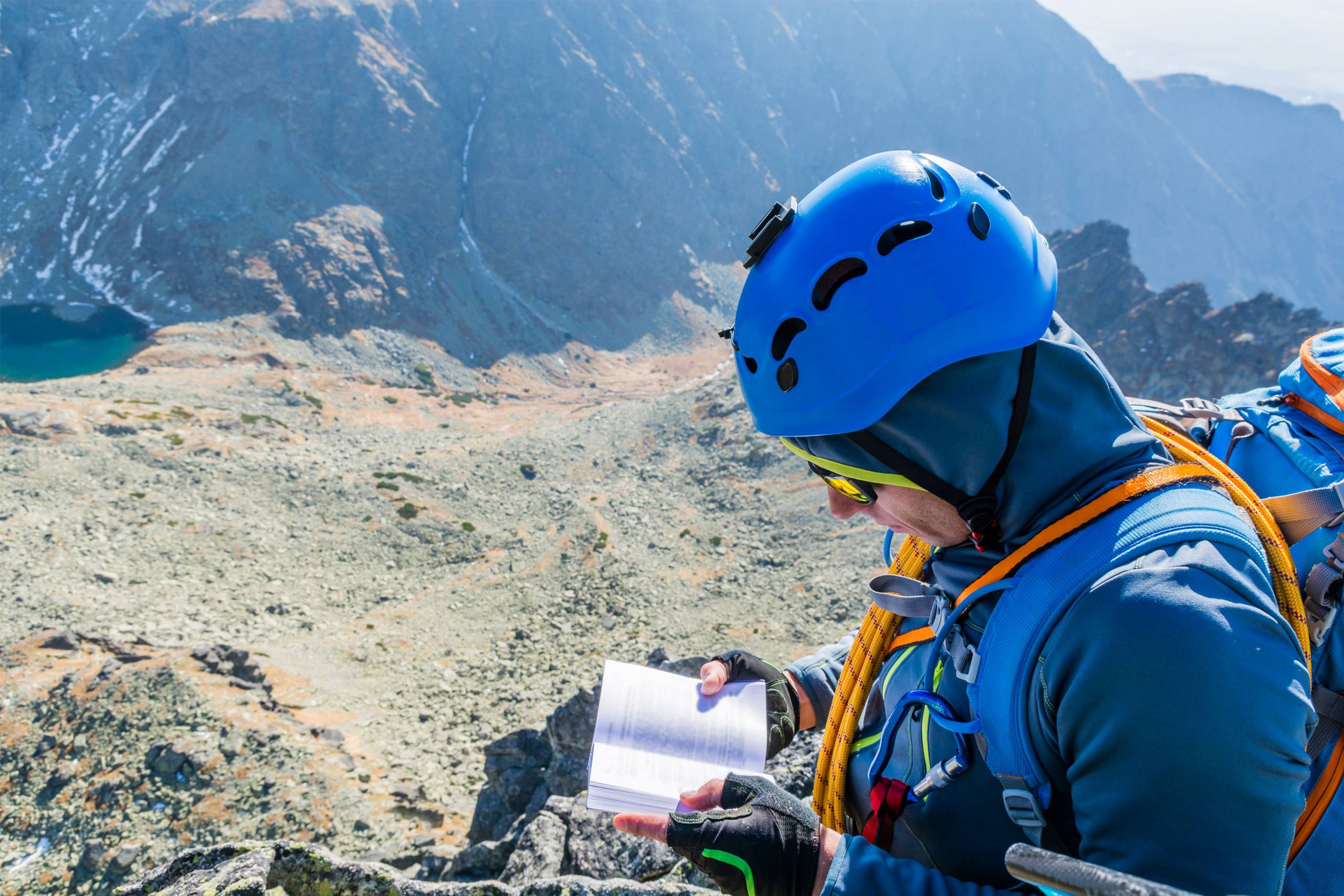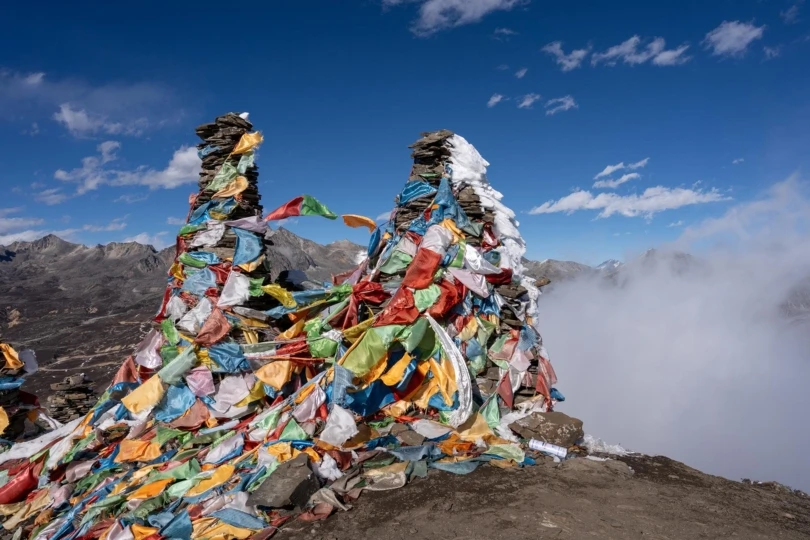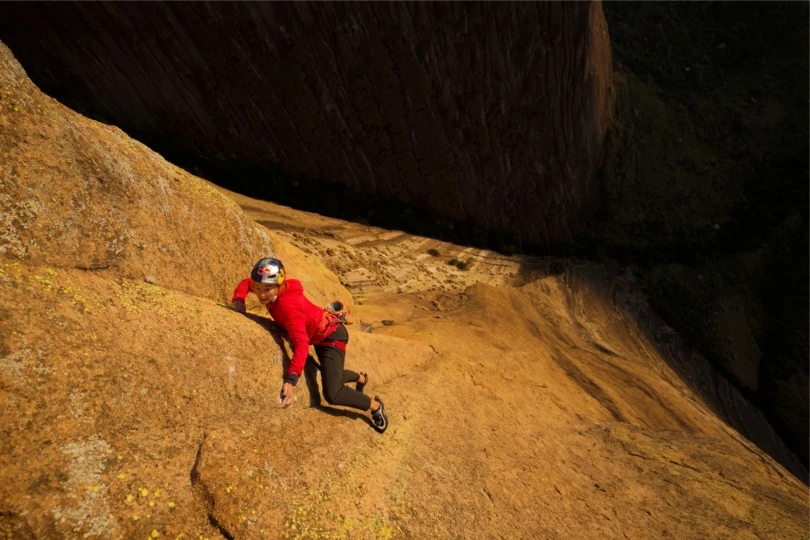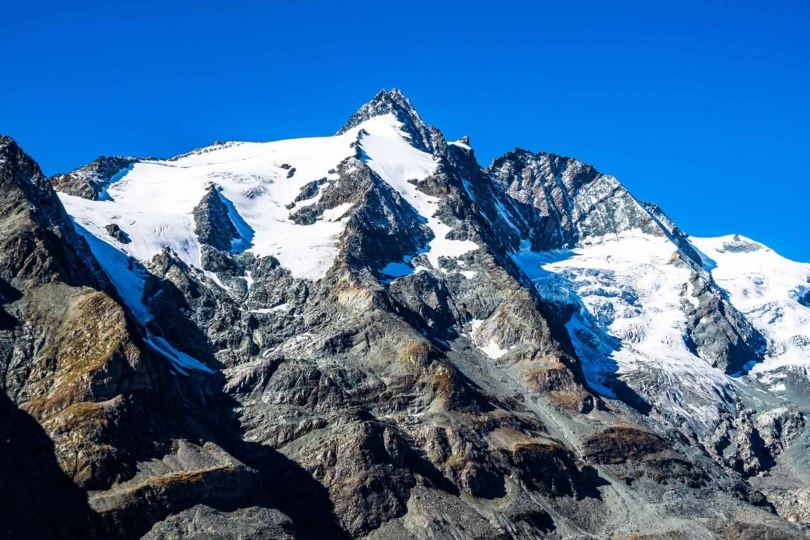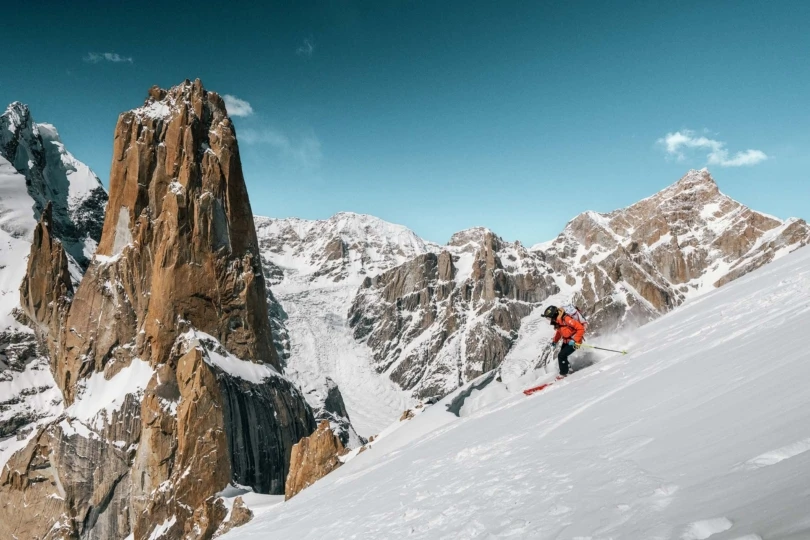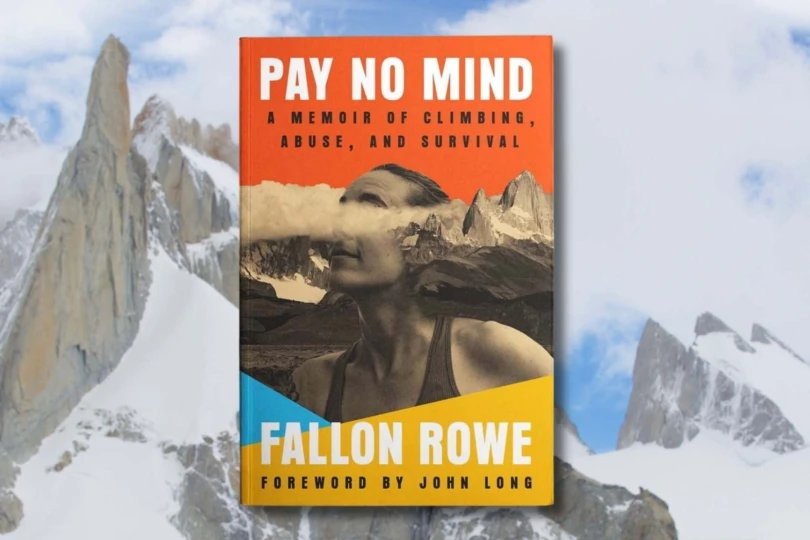Clashes over climbing grades are as old as the sport itself. From Fred Rouhling to Adam Ondra, climbing has both vilified and lionized its icons. But why?
Over the years, some accusations of inflated grades and even outright lying have boiled over into international controversies. Meanwhile, the community trusts other climbers letter-for-letter.
Before we dive into the strong forces like ego, acceptance, and the myriad complexities of human communication that influence climbing grades, some background on hard climbing grades may help the uninitiated.
Rock climbing uses a few systems of numbers and letters to “grade” a route’s difficulty. These systems help the vast majority of climbers draw a personal roadmap for which routes they can attempt safely and expect to climb successfully.
For example, a 5.12 climb is more difficult than a 5.11. And between those grades, there are sub-steps: a, b, c, and d (from easier to harder).
Think of them as “green circle, blue square, and black diamond” in skiing or “easy, medium, and hard” in video games.
This article deals exclusively with the bleeding edge of rock climbing difficulty — 5.14d and harder. Statistically, almost no one can climb routes that hard. If climbing were skiing, 5.14d would be far harder than a double black diamond.
And if climbing were a first-person shooter video game, 5.14d would be a setting so hard that almost all players would die within seconds of starting the level.
At that threshold, all the media and controversy converge.
World’s First 5.15a: Meet Fred Rouhling
Take French climber Fred Rouhling. In 1995, he announced that he had climbed “Akira,” a 45-foot roof route with a V13 crux at an obscure crag. The hardest route in the world at the time was 5.14d.
Rouhling called “Akira” 5.15b, and the climbing world eviscerated him.
The possibility that Rouhling, a relative unknown, could have skipped half a number grade insulted some in the scene, including the high-profile likes of Dani Andrada and Alex Huber.
But no one could repeat the route, despite multiple efforts by the sport’s best at the time. Still, the community at large invalidated the grade. Some maintained that he had never climbed it at all. Others claimed that he altered the holds to make the route harder after he climbed it.
A lot of the Rouhling saga is now lost in the non-digitally recorded sands of time. Some comment threads still trace it, and there are instances where the French-speaking Rouhling is the primary source. Apart from that, an outstanding 2005 investigative article for Climbing by Pete Ward (frequently referred to here) make up what amounts to the living chronicle of the incident.
Six years after “Akira,” Chris Sharma’s “Biographie” (aka “Realization”) set a new benchmark. Multiple elite climbers had tried the long route (about 120 feet) for years, but a V9 boulder problem guarded the top section. Finally, in 2001, Sharma punched through.
Amid the climbing equivalent of a ticker-tape parade, “Biographie” became the world’s first 5.15a — even though Sharma himself didn’t grade it.
You read that right — “Biographie,” the first consensus 5.15 in the world, never got a grade from its first ascensionist.
Perhaps even more strangely, virtually no one argued the grade. In fact, subsequent repeaters who started redpointing it a few years later neither graded it nor disagreed with the consensus difficulty.
The route’s consensus seems to have somehow established itself passively, over a multiyear process. To this day, “Biographie’s” 20 total ascents have all served to confirm that it’s 5.15a.
The stats on “Akira?” Two repeats, both within days of each other, 25 years after the first ascent. Grade: 5.14d.
What made the climbing community ostracize Rouhling and lionize Sharma? Why has “Biographie” attracted so much positive attention and “Akira” so much rancor?
Ultimately, in the ever-present squabble over grades, why do we trust some climbers and accuse others of lying through their teeth?
In Brief: Hard Grade Conjecture in the Early Days of 5.15
In the ‘90s, controversy roiled at the boundary of 5.15 — and not just around the “Akira” hotspot. Expanding media, rap bolting, a globetrotting culture, and full commitment from a strong core group pushed sport climbing ever further. Climbing magazine’s “Hot Flashes” column crackled with new 5.14 climbs from JB Tribout and Ben Moon in Europe to Joe Kinder and Tommy Caldwell in the U.S.
Some 5.14 routes of the time proved to be so highly resistant that they didn’t see repeats for decades. Some received upgrades (even to 5.15 by Adam Ondra, in one case) when they did. One notable 5.15 route got much quicker repeats and plummeted multiple letter grades in the process.
Bernabé Fernández made a similar splash as Rouhling with the first ascent of “Chilam Balam” in 2003. That year, “Biographie” still didn’t have a repeat, and no one had put up a bigger number (unless you trusted Rouhling, which you didn’t).
Fernández called “Chilam Balam” 5.15c. In a déjà vu repeat of the Rouhling debacle, the community said there was no way Fernández had climbed the route, and then summarily dismissed the grade. Also similarly, repeats that came years later cooled the grade off: consensus now holds at 5.15a/b.
(‘Chilam Balam‘ from Saltatela on Vimeo)
Somehow, “Biographie” and its author occupied a position of serene neutrality in the eye of the storm.
Trust in Climbing Grades I: The Pariahs
It’s hard to say who’s attracted the most vitriol ever through the perception of inflated climbing grades. However, the top two are absolutely Rouhling and Fernández.
Opinions about “Akira” ranged from contemptuous to slanderous. Alex Huber questioned Rouhling’s experience, stating that he was too green to grade a route that hard. Some said that he had chipped the route in the first place, and then realtered the holds later to make a repeat harder.
View this post on Instagram
As part of Ward’s “Akira” feature in Climbing, Huber implied that Dani Andrada could confirm the hold modification if asked. The exchange between Ward and Huber took place over beers at a French tavern.
I then ask Huber what he thinks of Fred Rouhling. Huber raises his gaze and looks directly into my eyes. His glare is so intense that I instantly understand how he is able to climb the hard, scary routes for which he is famous.
“You should ask Dani Andrada about Fred Rouhling,” he replies. I ask him why I should talk to Dani Andrada. “Dani says that the route now is harder than when Fred did it. He says that there is Sika, glue, in the holds now. No? He says that Fred made it this way.”
Ward apparently never encountered Andrada, though the article also speculated that he was attempting the route between visits by Ward, Rouhling, and Tim Kemple, the assignment photographer.
For his part, Andrada’s relationship with the location seems somehow compromised, or negative. After the repeats, he commented to Wogu Climbing:
I was about to do it. I fell in the last step of the key block. I find that section hard for 7C as Bouin and Martinez have now opined. It’s a block of about eight movements, which can be 8A or 8A+ in my opinion. I think the proposal of 9a is correct considering that they may have taken some step with knees as well.
I went 7 or 8 days to try it. The place is quite ugly and I had a hard time finding someone to accompany me. The road is in the style of “Ali Hulk” in the Cave of Ali Baba, in Rodellar (Andrada’s own 5.15b first ascent), but the place is so bad that it is difficult to motivate yourself to go there.
Another problem Rouhling faced is that no one had seen him climb “Akira” except his wife, who belayed him on the claimed first ascent. Did he, in fact, climb it?
Primary proof of the ascent, as well as what the route was like in its original condition, is now a casualty of history. Seb Bouin and Lucien Martinez, the 2020 repeaters, called the crux boulder problem V9 — a stunning four grades below Rouhling’s original evaluation.
Rouhling, who wasn’t with Bouin and Martinez at the time, said the crux was “no longer the same as it was in the original state.”
In retrospect, the reasons behind Rouhling’s bad reputation are murky at best. Most accounts indicate his congenial nature, and confirm that he maintained it in the face of the community’s shunning.
He did manufacture other routes — a relatively common practice in the ‘90s — and openly admitted it. But he was upbeat in his Instagram comments about Bouin’s and Martinez’s “Akira” repeats, even regarding the downgrade (see above).
Fernández and ‘Chilam Balam’
Fernández, meanwhile, played the engineer of his own demise. “Chilam Balam” is an impressive tract of limestone: 270 feet of wildly overhanging tufas and colonettes (narrow columns) with several boulder cruxes. Fernández worked it for 3 years, fighting rope drag with unorthodox tactics like static ropes and 3-foot-long draws.
Then, he claimed the first ascent on July 4, 2003. But when Spain’s Desnivel Magazine later asked him to repeat it with its staff present, he refused.
“We explained to Fernández that he was claiming the most difficult ascent in the world, and that it had to be clear to all of the climbing community that he had climbed the route,” Dario Rodriguez, then-editor at Desnivel, told Climbing. “But Fernández still refused.”
Interestingly, Huber spoke up again. “I cannot take Bernabé’s proposal seriously as I can’t see any references that would demonstrate his skills of climbing at such a high level — far above the rest of the world,” he wrote on 8a.nu.
The episode hurt Fernández’s credibility, and his already-established reputation for altering routes didn’t help. He had previously bolted several artificial holds onto “Orujo,” Spain’s first 5.14d, to make the first ascent in 1998. Later, either he or others removed some and bumped the grade to 5.15a.
He regularly posts photos of himself on “Chilam Balam” to Instagram, but never mentions the first ascent. The photo record starts in 2003.
View this post on Instagram
Trust in Climbing Grades II: The Dissenter
The more you research disputed hard sport climbing ascents, the more you see Huber’s name. He added to the discourse often and candidly, but he also did a fair bit of hard climbing himself.
Including the route that might actually be the world’s first 5.15a.
Huber might be best known around the world as a big-wall free climber. He and his brother, Thomas, opened numerous hard free climbs in Pakistan, Switzerland’s Ratikon, and the United States in the ’90s, including the “Freerider.”
However, he was also a pretty good sport climber. In fact, in his prime, he was among the several best climbers on the planet. His ticks include “Om,” a 5.14d first ascent in Bavaria that he climbed in 1992. That put him just months behind the cutting-edge pace Wolfgang Gullich established with “Action Directe,” 5.14d, in 1991.
After “Weisse Rose,” 5.14d, and “La Rambla,” 5.14c (now 5.15a with various alterations) in 1994, Huber started to refocus toward big-wall climbing.
View this post on Instagram
But when the 5.15 grade started to seep into the international sport climbing conversation, he made his voice heard. In Rouhling and Fernández’s cases, he unapologetically suggested that both their routes should be downgraded for essentially the same reason: lack of 5.15-threshold experience.
Here he is again in the tavern in Ward’s article:
Huber continues, contending that if a person has climbed at the cutting edge, there must then be a track record of his other hard ascents. Huber gestures with his hand: “If Rouhling’s level is here,” he says, holding his hand at chest level, “and then with Akira it is here” — he holds his hand at his forehead — “then there should be many other routes around here.” The hand is level with his nose. “Where is this track record?” Huber asks. The hand moves to the side of his head, palm up. “Why hasn’t he done many other hard routes soon after Akira?”
Regardless of whether he thought Rouhling altered the route, he was clearly incredulous that could have climbed it, based on his experience.
He appeared gentler on 8a.nu, discussing Fernández and “Chilam Balam.”
“Rather than insulting Bernabé, I am giving him a fair and honest chance, because I am letting him know my opinion about his proposal,” Huber said. “Informing him about my doubts gives him the opportunity to answer and to consolidate his credibility.”
He added that “the climbing world is faced with a problem that has occurred many times before: potential overgrading.”
In the post, Huber doesn’t elaborate on why he thinks overgrading is a problem. But if you trust Adam Ondra about climbing grades, Huber might have undergraded a potentially historical route.
View this post on Instagram
Huber made the first ascent of “Open Air” at 5.14d in Schleierwasserfall, Austria in 1996. Twelve years later, a young Ondra ticked the first repeat. Using “Action Directe” as a benchmark, he said on 8a.nu “whopee! my hardest definitely! a bit harder than ‘Weisse Rose,’ so 9a+ should be appropriate I hope. [If ‘Action Directe’] is 9a, this should be 9a+.”
As Ondra nods to in his full comments, Huber came from a different era of climbing and thus a different approach to grades. In 1996, “Action Directe” was technically UIAA grade XI, equivalent to 5.14c/d. When the French system took over, it became 9a/5.14d.
He discussed inflation with Planetmountain in 2008, landing on a clear condemnation (French grades replaced with YDS in text for clarity):
Adam confirmed my thoughts about “Weisse Rose”: it’s harder than “La Rambla.” It’s a fact that “La Rambla” increased in grade from 5.14c to 5.15a. Often people believe this is due to the route extension, but in reality the difficulties do not change substantially with this extension.
To this you also have to add the fact that ‘La Rambla’ isn’t harder than “Action Directe” and therefore cannot be harder than 5.14d. In 1995, “Action Directe” was given 5.14c, that is why my routes such as “Weisse Rose” and “La Rambla” had to be given 5.14c.
Nowadays “Action Directe” is considered to be the benchmark 5.14d, so both “Weisse Rose” and “La Rambla” turned into 5.14d. And if you take “Action Directe” as a reference for 5.14d, then I believe many current top routes are considerably overgraded.
Trust in Climbing Grades III: The Champions
If there’s one thing that’s discernible among the static at the top end, it’s that we think narrators of varying reliability broadcast it — just ask Huber.
We’ve probably lost the ability to confirm or disconfirm the basis for Rouhling and Fernández’s apparently inflated grades. On the other hand, we tend to trust Ondra to get the numbers right. Climbers have displayed similarly high fidelity for Chris Sharma, even when he doesn’t offer an opinion at all.
But to say Sharma and Ondra are always right is an oversimplification. It appears, instead, that we look to them to levy authority — and, maybe more importantly, to establish precedents.
When climbing was young, it tended to produce tall tales and bigger-than-life characters. And especially in the days before cellphone videos, a good storyteller could sell embellishments that were indistinguishable from the truth, except to a select few who may have been there.
Episodes prone to fictionalization include the first ascent of Mexico’s El Gavilan (which was reportedly crawling with aliens), the Yosemite plane crash that yielded thousands of dollars to dirtbags in the form of smuggled pot, and even the debunked first ascent of Cerro Torre.
As the sport started to grow into itself, someone had to step up and officiate. As demonstrated above, conflicts were breaking out. How else could the community verify which one of this rotating cast of rowdy, mercurial characters was winning the game of “who can climb the hardest?”
There’s an irony to the fact that Sharma emerged as sport climbing’s first authority figure on 5.15 grades.
It quickly became obvious that he had world’s-best potential, but he often shirked the responsibility of grading altogether. On a mid-’90s trip to Hueco Tanks, his legend grew as he housed family-sized bags of gummy bears (and other, ahem, consumables) and gleefully put up hard, dangerous first ascents all over the place.
Asked to grade one problem, the teenager said in Climbing magazine that it was “pretty diesel.”
By the time he climbed “Biographie,” his attitude had admittedly shifted — by the early 2000s, he had somewhat matured into the mellow-psyched Boheme he became known as. Once seen as something like enfant terrible behavior, his indifference to grading now appeared to indicate a sagacious humility or a special contact with climbing’s inner truth.
Skip to 10 seconds into Big Up’s “Biographie” send video to watch him using a wine glass as a singing bowl and heading up the trail to the cliff barefoot.
It’s hard to overstate the reverence the climbing community shows for Sharma. Casual buds with Jason Momoa, conqueror of the world’s first 5.15 deep water solo, dreadlocked 20-something who seemed to send everything he walked up to with no footwork, he seemed like the enlightened bro so many climbers wanted to be.
When he was 26, Climbing unironically called him the “King of Kings.”
View this post on Instagram
Ondra’s reputation is similarly bulletproof, even though he interprets climbing difficulty from the exact opposite end of the spectrum. Throughout his career, Ondra has unapologetically addressed the topic with a clinical, comparative style.
He often offers his opinion by dissecting routes in a few sentences and contextualizing them against routes in a similar grade range.
His provable status as the world’s most successful hard rock climber (by many permutations) seems to inform his approach to grading. Ondra is a de facto expert; so, he engages with his medium of expertise directly and draws on unmatched experience to do it.
As such, he tends to avoid assigning routes “personal grades,” which has gained popularity lately. Instead, his careful evaluations apply to all subsequent climbers.
View this post on Instagram
Insofar as that’s who rock climbing’s two (oddly paired) hard-grade czars are, why do we trust them to tell the truth?
5.15 first ascensionist Jonathan Siegrist posited that both Ondra and Sharma have attracted trust with unassailable work ethics and good attitudes.
“People really, really respected Chris’s climbing resume, and they valued him in a way,” Siegrist said. “They thought, ‘oh, this guy knows what he’s talking about.’ Adam Ondra’s a perfect example of that — he can suggest almost any [grade], and no one’s going to question what he says.”
“Maybe it’s a product of not feeling threatened,” he added, “because he’s got so many more ascents in the realm of the ‘hard hard.’ But he’s also so encouraging and so psyched for other climbers.”
As a result, they’ve essentially authored their own good reputations. Apparently unencumbered by the fear of public rebuke, they have instead gained near-comprehensive public acceptance.
World’s Hardest Route Requires World’s Hardest Climber, Right?
From here, about 2 decades out from the claimed first ascents, speculating whether Rouhling and Fernández did or did not climb “Akira” and “Chilam Balam” promises little yield.
Assuming they did in fact climb the routes, one reason why other climbers met them with such skepticism stands out starkly.
Saying that you have climbed the hardest route in the world is tantamount to saying you are the world’s best climber. Demonstrably, you have placed yourself in a category of one, atop and essentially better than everyone else.
From that perspective, it’s pretty easy to see how you’d attract some negative attention.
Most people will stop short of assuming a mantle like that, let alone giving it to themselves. GOATs in other sports usually don’t become GOATs until they’ve proven themselves. Their track records, like statistics and win/loss records, inform their status.
In hard climbing, community consensus determines stats and records. The risk of saying that you just established the world’s hardest climb is that enough others will say, “No, you didn’t,” to make it publicly irrelevant.
Witness again Sharma’s refusal to grade “Biographie.” Whether or not he intended to defer responsibility to protect his reputation, that’s functionally what happened.
He also appeared to learn a lesson from the minor controversy that did surface later. When he sent “Jumbo Love,” the world’s first consensus 5.15b in 2008, he told Big Up Productions (now defunct, sourced from Climbing Narc), “Sometimes if I don’t give a grade, people start speculating, and then it can get all blown out of proportion.”
View this post on Instagram
It’s anybody’s guess whether he meant grades or community reactions by “blown out of proportion.”
Regardless, the backlash to “Biographie” was almost nonexistent. The tranquil conditions around the route might get closer to the pith of why repeaters never argued the grade.
Sure, you can’t propose to make a change to something that doesn’t exist. But humans’ instinct for social acceptance might even be stronger than our desire to get in on a kill. Nobody said “Biographie” was 5.15a. It just was. The assessment was easier to fall in line with than to argue with — with whom would you argue?
(For what it’s worth, Rouhling was a “Biographie” misfit — he tried the route soon after the first ascent but got shut down.)
It’s also fair to say that refusing to keep score dilutes competitive behavior. That’s another function of “Biographie’s” non-grade that could have made it more acceptable: there was nobody to measure up to; nobody to prove wrong.
Obviously, it was hard, and Sharma had done it, but what had he done? As Siegrist pointed out, his reputation was already solid. Maybe it seemed feasible that he had done 5.15a, so others decided that he in fact did. His comments about the community routinely emphasize gratitude and friendship.
View this post on Instagram
The distinction resulted in almost no change in Sharma’s reputation: by general consensus, he was already the best climber in the world. Now, he happened to have climbed the hardest route in it.
When Ondra climbed “Silence,” 5.15d, in 2017, the same lack of a thing happened. Everybody knew he would climb it, and that it would be the world’s hardest route. Then, he did and it was.
Authority vs. Trust? Last Words on ‘Akira’ and 5.15
So what’s the big takeaway? Wouldn’t it be boring if it was “the world’s best climbers by consensus climb the world’s hardest routes by consensus because we all agree on it”?
Instead, I’ll submit a conclusion that’s at least more provocative (if maybe not any more interesting): We let people we trust tell us whatever they want.
Who knows whether “Silence” is 5.15d? Only Adam Ondra. Who knew “Biographie” was 5.15a? Not even Chris Sharma, according to the available evidence. Either way, nobody has mounted a serious challenge to either ascent.
It’s also fully possible that social media and cellphone videos have defanged the conversation. If you want to prove that you climbed a route and you have a functioning phone, it’s no longer necessary to get others to take your word for it. From our current position, the intensity and vitriol of the pre-cellphone era controversy dissipate toward the horizon.
We never had to wonder whether Ondra climbed “Silence.” We already knew he was doing it, thanks to months of social media leadup and, shortly after the send, an uncut video — begone, internet trolls.
Admittedly, that’s different than the “sure he climbed it, but how hard is it really?” conversation. For that, we still rely on the same system we always have (which may be the only one that ever works): climbing the things and then sharing opinions.
If you fast forward a generation from the late ‘90s to now, you’ll find almost the exact same conjecture at the top end today — without all the macho theatrics. The world’s only 5.15d route is unrepeated, thus unconfirmed.
But entry-level 5.15 ascents are relatively common and as a result, the lines between everything in the middle are getting blurry.
A busy 2021-22 climbing season in Europe resulted in a flurry of downgrades. Stephano Ghisolfi called Alexander Megos’ “Bibliographie” 5.15c, not 5.15d; Jakob Schubert downgraded two mid-5.15 Will Bosi routes. Ondra himself downgraded Ghisolfi’s “Erebor” from 5.15c to 5.15b (invalidating what was at the time the hardest-ever female redpoint).
View this post on Instagram
Dutifully, climbers picked up the conversation and ran with it. But now, the tones we speak in are decidedly different.
Remember Alex Huber’s intense glower and subsequent condemnation, back in the French tavern? When Ghisolfi sent “Bibliographie,” he had climbed two other 5.15c routes: “Change” and “Perfecto Mundo.” Here’s how he evaluated downgrading one of the world’s two hardest climbs:
I tried to compare it to Change and Perfecto Mundo, changing my mind every other day. Change took me around the same time and Perfecto Mundo a bit more, but I feel all the 3 routes could fit all in the same grade range. I know I can climb a 9c, but for a route to be that grade it needs to be much harder than the existing 9b+s, and Bibliographie for me isn’t.
This doesn’t mean I want to belittle the performance of anyone, neither Alex’s or mine, it is still an incredible achievement (especially the first ascent that includes many more hard mental and physical aspects) but I just wanted to be honest about what I felt during the whole process on Bibliographie, and this is just my opinion, hopefully we will listen [to] others soon.
Siegrist talks about grade fluctuation with a similarly compassionate personal standard. In fact, he used a lot of the same concepts — and vocabulary — as Ghisolfi to describe the recent downgrades.
“As far as ‘Bibliographie’ and Will Bosi’s routes, I think it’s just Stefano and Jakob being honest with themselves and giving second opinions,” he said.
“I think that both Bosi and Megos are unquestionably some of the best climbers in the world. But they do have relatively little experience with super cutting-edge first ascents. It doesn’t have to be about, like, getting butthurt and dissing people. It can just be an opinion.
“Ultimately, with the kind of person who gets really, really upset about grades — and there are some of these people — I wonder ‘what are you after?’ Anyone I know who’s super passionate about climbing could get their route downgraded, and it’s not going to change what they’re doing today — which is going out, trying their best, and staying motivated.”
Final exhibit: Fred Rouhling stands under “Akira” in 2012, 16 years after the claimed first ascent. Pete Ward has discovered a hold in the crux section that looks like someone has chipped it.
Rouhling has all but convinced Ward that he can climb the route in its current (allegedly harder) state. So, Ward asks Rouhling to climb the section.
From Ward:
I think I have finally caught Fred Rouhling in a lie. There appears to be a chipped hold on Akira, a route Fred says he did not manufacture. I call Rouhling over and point out the hold. I ask him to climb this section of the route. Fred takes a moment to look over the section. He examines the tick marks left by whoever has been trying the route, pantomimes a few sequences, and sits down to put on his shoes. Tim loads some film while I move a few pads around, wondering how I should feel if I have indeed caught Fred in a lie. I decide that’s his problem, and wait to see if he needs the suspect hold — or if he can climb the thing at all.
As Rouhling puts his shoes on, Tim and I exchange a glance. We’re going to find out what he can do, one way or the other. Rouhling steps onto the rock, and without so much as a grunt or a deep breath he fires the last fifteen feet of the roof without using the chipped hold and without any of the ticked footholds. He dangles from the horizontal, we stack pads, and he jumps down.
By all accounts, “Akira” has changed a lot since 1996. So has Fred Rouhling, now 52 years old. But the next time I see him at the crag, my money’s on him to flash my project — chipped or not.

